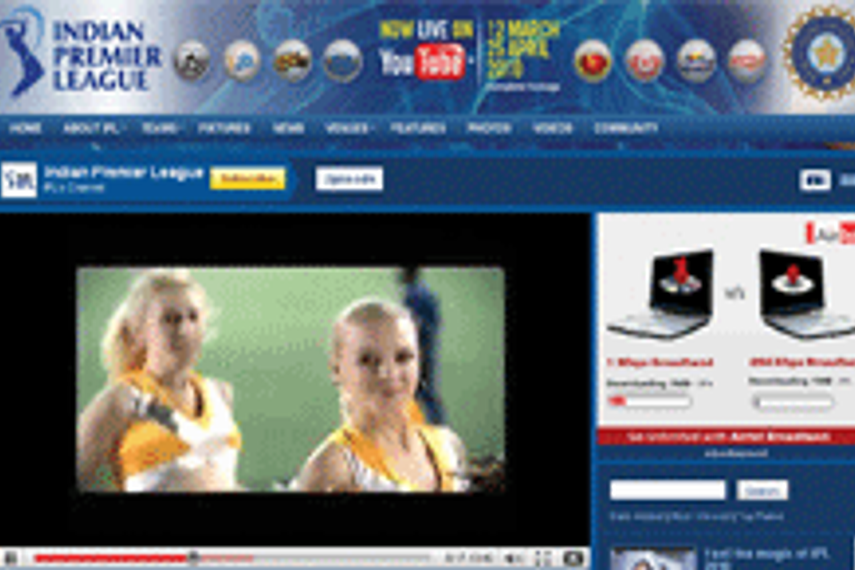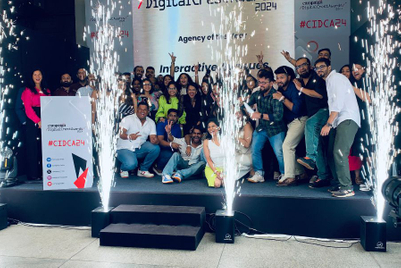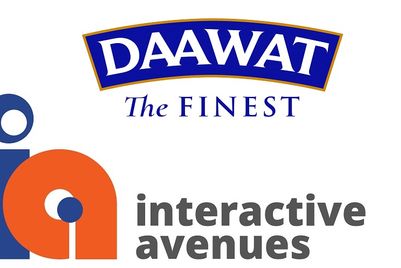
Will the IPL on the net encourage marketers to spend more time understanding the net, asks Campaign India.
The Indian Premier League recently announced its decision to broadcast matches from its third season Live on YouTube. In one of his recent tweets, Sundar Raman, CEO, IPL said that he expects the YouTube-IPL partnership to change the face of the broadcasting business. The news has brought some cheer to digital media evangelists, as they expect existing categories to up spends on online video advertising, currently the main constituent of rich media advertising in India.
Campaign India spoke to some experts on the growth they expect the partnership to bring to rich media advertising.
Anjali Hegde, VP and founding partner, of the digital agency Interactive Avenues says, “IPL is going to be one of the most watched events and the internet user base is affluent, educated and largely comprises of urban Indians – a perfect opportunity for telecom, automobile, durables, FMCGs amongst others. The success of this first ever digital event has the potential of changing the game for rich media advertising in India.”
Experts opine that a separate ad inventory for the Live streaming of IPL matches would help address the demographics of online viewers. Naren Nachiappan, MD, Jivox says, “Video advertising for Live streaming for cricket has a very interesting trade-off. You’ll have users who are not so involved with the Live streaming content, and you’ll also have users who are deeply involved with the content. Pure rich media are highly interactive - you want to have people stop to you and talk to you. But in general, it gives you an audience that’s quite engaged, that spends time on the site. So the conversions on your ads are going to be particularly good.”
Madan Sanglikar, partner-invention, Mindshare says that adoption of video advertising will be driven in a big way by pricing. “The tournament is not going to change YouTube’s fortunes overnight. The opportunity for YouTube was already there – it is very popular in India – but it did not have a dedicated sales framework in India. With the IPL partnership, it is like YouTube starting a big-bang business model altogether. But pricing will play a big role here,” he says.
However, some caution that the advertising content must be dynamic enough for the web. Which means, purely pasting the TVC alone won’t do. “If anyone is using non-clickable, non-dynamic ads within Live streaming then those are not rich media adsvertising and the advertiser is not getting value for money,” says Saurabh Bhatia, chief business officer, Vdopia, which is an online and mobile video monetization company. “That is like taking a TV stream and throwing it at users with no interactivity for the advertisers within the ad.”
IPL won’t be the first time online advertisers will open up to Live streaming. Vdopia claims clients like Aircel, IDBI Bank, Axe, Samsonite, Maruti, Volkswagen, SBI have used it on Neo Cricket’s www.cricketnirvana.com during the Live webcast of the India-Sri Lanka cricket series recently.
The Indian Premier League recently announced its decision to broadcast matches from its third season Live on YouTube. In one of his recent tweets, Sundar Raman, CEO, IPL said that he expects the YouTube-IPL partnership to change the face of the broadcasting business. The news has brought some cheer to digital media evangelists, as they expect existing categories to up spends on online video advertising, currently the main constituent of rich media advertising in India.
Campaign India spoke to some experts on the growth they expect the partnership to bring to rich media advertising.
Anjali Hegde, VP and founding partner, of the digital agency Interactive Avenues says, “IPL is going to be one of the most watched events and the internet user base is affluent, educated and largely comprises of urban Indians – a perfect opportunity for telecom, automobile, durables, FMCGs amongst others. The success of this first ever digital event has the potential of changing the game for rich media advertising in India.”
Experts opine that a separate ad inventory for the Live streaming of IPL matches would help address the demographics of online viewers. Naren Nachiappan, MD, Jivox says, “Video advertising for Live streaming for cricket has a very interesting trade-off. You’ll have users who are not so involved with the Live streaming content, and you’ll also have users who are deeply involved with the content. Pure rich media are highly interactive - you want to have people stop to you and talk to you. But in general, it gives you an audience that’s quite engaged, that spends time on the site. So the conversions on your ads are going to be particularly good.”
Madan Sanglikar, partner-invention, Mindshare says that adoption of video advertising will be driven in a big way by pricing. “The tournament is not going to change YouTube’s fortunes overnight. The opportunity for YouTube was already there – it is very popular in India – but it did not have a dedicated sales framework in India. With the IPL partnership, it is like YouTube starting a big-bang business model altogether. But pricing will play a big role here,” he says.
However, some caution that the advertising content must be dynamic enough for the web. Which means, purely pasting the TVC alone won’t do. “If anyone is using non-clickable, non-dynamic ads within Live streaming then those are not rich media adsvertising and the advertiser is not getting value for money,” says Saurabh Bhatia, chief business officer, Vdopia, which is an online and mobile video monetization company. “That is like taking a TV stream and throwing it at users with no interactivity for the advertisers within the ad.”
IPL won’t be the first time online advertisers will open up to Live streaming. Vdopia claims clients like Aircel, IDBI Bank, Axe, Samsonite, Maruti, Volkswagen, SBI have used it on Neo Cricket’s www.cricketnirvana.com during the Live webcast of the India-Sri Lanka cricket series recently.
 Saurabh Bhatia, chief business officer, Vdopia
Saurabh Bhatia, chief business officer, Vdopia“This is yet to be seen and depends on how Google brings it. Advertisers would definitely expect dynamic and interactive video advertising coupled with ability to interact with the ad within the Live feed. They have tasted such advanced video (rich) advertising during India-South Africa and India-Sri Lanka series thanks to ourVlive technology. It’s to be seen whether Google can match up to this. Video has been on a steady growth path and any more good content coming onto internet is welcome and will drive viewership. We reached approximately 3 million unique users during the India – SL series, serving over 40 million rich media video ads.”
 Pushkar Sane, chief digital officer, South, North Asia, Starcom MediaVest Group
Pushkar Sane, chief digital officer, South, North Asia, Starcom MediaVest Group“The IPL-YouTube deal will drive growth of rich media and specifically video advertising in India. Most advertisers invest a significant portion of their ad budgets on television. So it will be easy to leverage their current video assets for advertising on YouTube but they need to avoid the common mistake of simply running their existing TVCs on YouTube. I think this is a perfect opportunity for proving the value of digital beyond impressions/clicks/leads and help clients measure (in real-time) awareness, likeability, comprehension, intent and advocacy. It would certainly help in proving the power of rich media in building brands.”
 Anjali Hegde, VP and founding partner, Interactive Avenues
Anjali Hegde, VP and founding partner, Interactive Avenues“IPL on YouTube has created a huge buzz which is bound to generate larger revenues for Google. The low-hanging prospects would be the brands which are current IPL sponsors on-ground as well as television. It would provide an exciting opportunity for telecom, automobiles, FMCGs and also push them to use this platform in an innovative way. It will also initiate many new advertisers on the digital medium. There are some concerns about the quality of experience for the users for live telecasts – given the bandwidth speeds in India and many potential advertisers have raised this concern.”
 Naren Nachiappan, MD, Jivox
Naren Nachiappan, MD, Jivox“In general, online has been growing over the last six months dramatically. Having said that, IPL brings certain deliverables alongwith it. A lot of the growth will be dictated by pricing for the ad inventory for the YouTube Live stream. On TV, the IPL is the Superbowl of India, but on the web, it is yet to gain significance in a big way. So it would be interesting to see how the first year of IPL on YouTube turns out. Sectors like auto, entertainment, IT products are now increasingly adopting video advertising but when you take a look at the overall traffic and time spent on it, I’m not sure if Live streaming dominates all of the rich media spends.”
 Madan Sanglikar, partner – Invention, Mindshare
Madan Sanglikar, partner – Invention, Mindshare“Advertisers can leverage some benefits of the popularity IPL already enjoys. The reach issues may not be sorted completely, but they’ll have some answers on impact, frequency and measurability. Internationally, video advertising is a huge segment and the planning that goes into it is as intense as that done for TV in India, where we’re still learning our way. Largely, publishers and advertisers are not to be blamed, but bandwidth is a bigger issue. I think video advertising is growing faster than the overall online advertising space in India. It’s the need to get content on the go – entertainment and education are basically driving this segment.”


.jpg&h=334&w=500&q=100&v=20250320&c=1)
.jpg&h=334&w=500&q=100&v=20250320&c=1)


.jpg&h=334&w=500&q=100&v=20250320&c=1)


.jpg&h=334&w=500&q=100&v=20250320&c=1)
.jpg&h=334&w=500&q=100&v=20250320&c=1)




.png&h=268&w=401&q=100&v=20250320&c=1)
.jpg&h=268&w=401&q=100&v=20250320&c=1)
.jpg&h=268&w=401&q=100&v=20250320&c=1)


